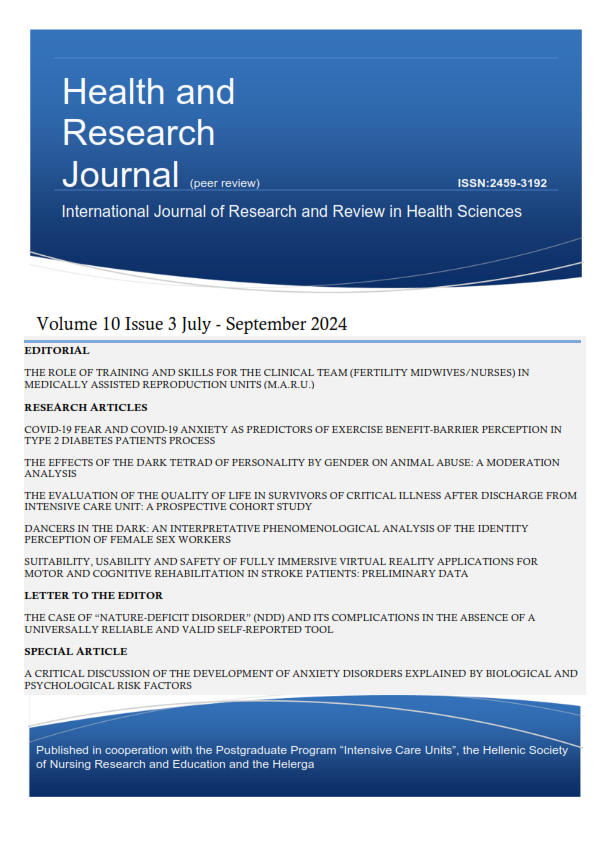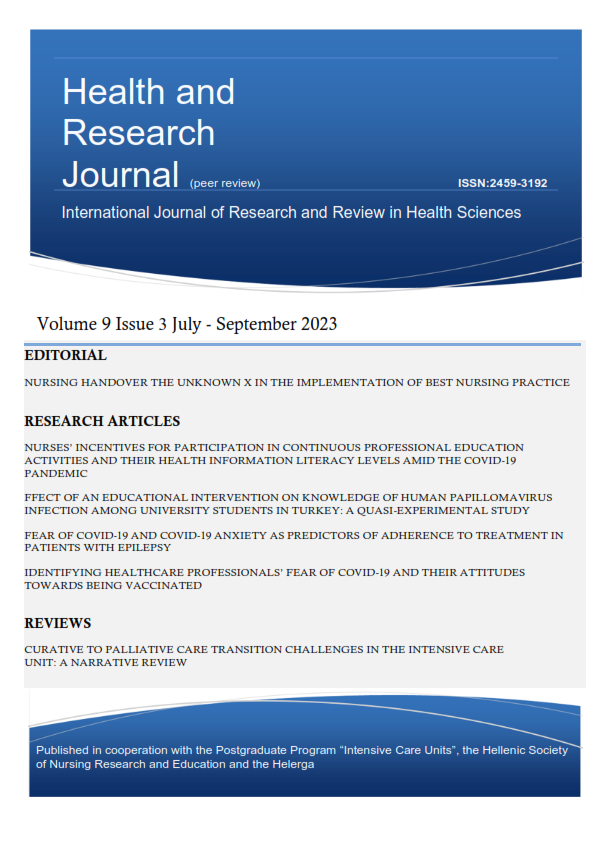COVID-19 Fear and COVID-19 Anxiety as Predictors of Exercise Benefit-Barrier Perception in Type 2 Diabetes Patients in the COVID-19 process Exercise Benefit-Barrier Perception in Type 2 Diabetes Patients

Abstract
Background: Exercise is an important building block in the management of type 2 diabetes. Perceptions of benefits and barriers related to that behavior may affect individuals' tendency towards protective behaviors such as exercise.
Aim: The aim of this study was to examine the fear of COVID-19, anxiety of COVID-19 and descriptive features as predictors of exercise benefit-barrier perception in type 2 diabetes patients during the COVID-19.
Method: The research sample consisted of 161 patients with type 2 diabetes. Patient diagnosis form, Exercise Benefits-Barriers Scale, Coronavirus (COVID-19) Fear Scale (CFS) and Coronavirus Anxiety Scale (CAS) were used as data collection tools. The data was shown as percentage and mean ± standard deviation (SD), and Pearson/Spearmen correlation and linear regression analyses were used to examine the relationship between the variables.
Results: In the study, when asked what the biggest barrier to exercising as a person with diabetes was, 38.31% of the individuals with type 2 diabetes said "COVID-19 pandemic". The total exercise benefit perception of individuals with diabetes was significant (F: 17.873, p<.001). In addition, for the perception of total exercise benefit, paying attention to risky situations (Hypoglycemia or hyperglycemia preventive behaviors) before doing physical activity (β = -.384), development of diabetic foot in the last six months (β =.163), COVID-19 anxiety (β =.205) were found to be statistically significant predictors (p<.001).
Conclusion: At the end of the study, it was found that illiteracy, having a history of diabetic foot development in the last six months, being married and an increase in the level of COVID-19 anxiety increased the perception of exercise benefit in individuals with Type 2 diabetes.
Article Details
- How to Cite
-
Arda Sürücü, H., sungur, M., & Temiz, E. N. (2024). COVID-19 Fear and COVID-19 Anxiety as Predictors of Exercise Benefit-Barrier Perception in Type 2 Diabetes Patients in the COVID-19 process : Exercise Benefit-Barrier Perception in Type 2 Diabetes Patients. Health & Research Journal, 10(3), 140–156. https://doi.org/10.12681/healthresj.33917
- Section
- Original Articles
Copyright notice:
The journal "Health and Research Journal" reserves the rights for copyright of the content of the website and also the copyright of the articles published.
By virtue of their appearance in this journal, the articles are free to be used for non-commercial purposes. However, the articles cannot and must not be used in anyway, published elsewhere or modified without any reference to the author and the first publication of the article.



